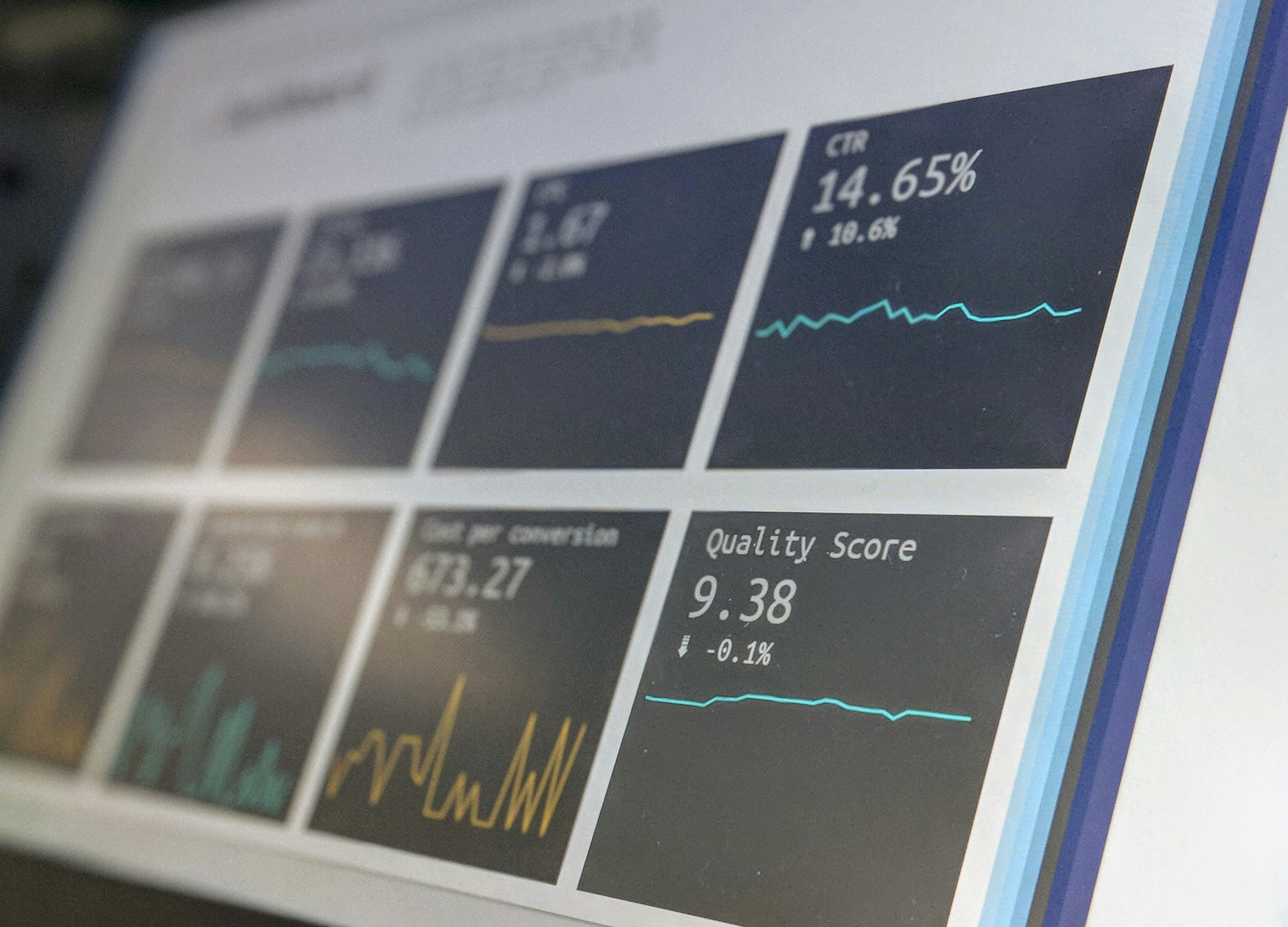Customer lifecycle management best practices involve strategies and techniques that empower businesses to engage with customers across all phases of their journey with the company. Understanding and implementing these strategies can lead to increased brand loyalty, customer retention, and ultimately, long-term profitability. By adopting the right customer lifecycle management tactics, businesses can boost customer satisfaction, streamline marketing efforts, and improve overall customer relationships, leading to business growth. In this blog, we delve into some of the best practices in customer lifecycle management and show you how to implement them for your business.
What Is Customer Lifecycle Management?

The customer lifecycle refers to the process of prospects becoming aware of a product, making a purchase from a brand, and ideally becoming a company's longtime customer. The process is made up of five stages: reach, acquisition, conversion, retention, and loyalty. The data you collect at each phase of the customer lifecycle can yield essential insights for sales and support teams and illuminate opportunities for improving the customer experience.
The Importance of Customer Lifecycle Management
Customer lifecycle management (CLM) is closely entwined with customer relationship management (CRM) and is ultimately a culmination of multiple customer-related metrics businesses monitor over time. It consists of assigning metrics to each stage of the consumer lifecycle and analyzing them to better understand performance.
Why Customer Lifecycle Management Is Important
In the late 1990s and early 2000s, businesses scrambled to maximize the power of the internet and of affordable computing technology. The realization, and inevitable shift of business culture, was a strengthened focus on the individual customer. The power of data and metrics gave business owners insight into each customer, apart from the next. This led to companies such as Amazon moving from “offer everything, big-box-store style” to curated, targeted, data-driven sales.
Twenty years later, this new customer-centric economy is the norm and the businesses recognizing the importance of analyzing and personalizing each step of the customer lifecycle succeed in engaging more customers.
Related Reading
What Are the 5 Stages of the Customer Lifecycle Management Strategy?

1. Awareness/Reach
The awareness stage of the customer lifecycle is the starting point for all potential customers. It encompasses the moment when a consumer first learns about your business and becomes interested in your products or services.
Not all customers are at the same level of awareness. Some may not even be aware of the problem your business solves, while others may be well-informed and ready to make a purchase. Customers typically learn about your business through various lead sources, such as social media, blogs, referrals, outbound sales, and paid advertising.
2. Engagement/Acquisition
At the engagement stage, also known as the acquisition stage, businesses actively engage with potential customers to move them closer to a purchase decision. This phase is crucial as companies create a robust knowledge base, offer chat support, and provide human touchpoints throughout the customer journey.
Engaging customers can involve distributing surveys, sending push notifications, interacting on social media, sending personalized messages, providing customer support across various channels, and using different mediums to distribute information.
3. Conversion
The conversion stage is where customers make their purchase decision. At this point, businesses must ensure that the buying process is frictionless, with multiple payment options and minimal steps required between clicking “Buy” and receiving a confirmation email. Transparency about pricing, returns, and refunds is crucial, as well as making it easy for customers to reach out to support.
Integrating marketing software and tools with customer service solutions can help personalize interactions and drive sales. Businesses can further boost conversions by offering quick contact options, using customer context for upsells, creating relevant resources, and sending proactive messages based on user events.
4. Retention
After converting customers, businesses must focus on customer retention. This stage is about building and nurturing relationships with customers to encourage loyalty. Providing a positive onboarding experience, ongoing support, personalized experiences, adapting to customer needs, building trust, over-communicating updates, showing appreciation, offering post-purchase support, and providing perks and discounts are strategies for fostering long-lasting relationships.
5. Loyalty
The loyalty stage is the culmination of successfully guiding customers through all stages of the lifecycle. Loyal customers are strong brand ambassadors who continue to purchase from your business and recommend it to others. Building customer loyalty involves providing incentives like points programs, tier-based loyalty programs, referral programs, discounts, early access, and thank-you notes. Loyalty programs help reinforce customer loyalty and create lifelong customers.
How to Conduct a Customer Lifecycle Analysis

Analyzing the Reach Stage
When analyzing the reach phase of your customer lifecycle, you're delving into how prospects first hear about your company. This stage is critical to understanding if prospects can discover your brand and its services.
- Where does a prospect first hear about your company? TV channels, social media platforms, sponsored ads, or search engines?
- How are you performing on these channels? Click-through rate and impressions can be indicators of reach.
- What are your competitors doing to reach customers that you're not doing?
- Are you known for a good or bad service experience?
- Do you post regularly on social media?
Analyzing the Acquisition Stage
The acquisition phase is all about providing prospects with the information and tools they need to transition from potential leads to active customers. It's all about the content you offer on your website and the content that piques a prospect's interest.
- What kind of content is on your website right now that can help make a customer make a decision?
- Do you have a blog? Is it easy to navigate and read?
- Have you created content offers that can entice a prospect to convert?
- Is your pricing available on your website? Do customers have the opportunity to call your sales team, should they choose or need to?
- Is your site easy to navigate, and is your service team easy to reach?
Analyzing the Conversion Stage
In your analysis of the conversion phase, the focus is on understanding potential barriers to making a purchase. This is where customers decide to convert and become paying customers.
- Is the purchasing process easy and straightforward? Do you offer an option for guest checkout, if applicable?
- Are there blockers to making a purchase? A buggy site, an outdated checkout page, or an insecure domain?
- Have you created a privacy policy that protects your customers from abuse and theft?
- Do you have a clear refund policy, product guarantee, or try-it-before-you-buy-it program that makes it easier to do business with you?
- Can your customers tell the quality of your product based on your product descriptions?
Analyzing the Retention Stage
The retention phase focuses on how to make a customer's experience better, ensuring they stay with your brand for longer periods. It's all about enhancing customer satisfaction and loyalty.
- How do your customers feel about your business?
- Have you made it easy for customers to do business with you again? For example, do you include a one-click reorder button in your user portal?
- Do your customers have a dedicated customer success manager who can help them navigate their new product, if applicable?
- How do customers like their new product after they purchase from you?
- Have you personalized the customer's experience so that they feel seen and appreciated by your brand? For example, do you deliver product recommendations based on their previous activity?
Analyzing the Loyalty Stage
Inspiring customer loyalty is the ultimate goal. Analyzing this phase of the customer lifecycle involves determining the likelihood of a customer returning for another purchase and referring your brand to others.
- Have you included social media follow buttons on your website and marketing emails?
- Do you engage with current customers in your social media profiles and comments?
- Do your current customers experience unique perks such as exclusive offers, discounts, and birthday gifts that can keep them coming back?
- Is there a referral program in place that makes it easy for your customers to bring you more prospects?
- Have you made your company easily accessible to your customers via email, phone, and live chat?
We provide a comprehensive solution for managing and enhancing customer journeys, delivering insights and measurable outcomes with no code. We accelerate your customer journey from onboarding and activation to conversion and churn. Enabling customers to unlock revenue from their existing users.
Transform Customer Interactions with Rengage
With Rengage, you can get insights into your segments, run campaigns with an intuitive journey manager, and get insights to measure how your journeys impact users conversion through our Journey Moments and Journey Builder features.
- Journey Moments: insights into your micro-segments
- Journey Builder: intuitive multi-channel marketing automation
- Insights prediction and attribution.
Book a free demo to learn about how you can transform customer interactions into personalized experiences that drive loyalty and growth.
9 Steps to Manage the Customer Lifecycle

1. Identify Your Target Audience
Before your customers discover your company, you need to determine who you're trying to reach. Rather than marketing to everyone, identifying a specific target audience, will help you create content that's relevant to your customers. The easiest way to define your target audience is to create buyer personas.
Buyer personas are fictional people who represent the demographic and behavioral characteristics of your customer base. They have names, backstories, and even hobbies. Everything you need to know about your customers is found in these personas. That they're fictional, and that the needs of your customers may evolve.
2. Share Relevant Content
Give your customers a reason to trust you before they invest in you. By putting out lots of useful, engaging, search-engine-optimized content, your company will pop up more frequently when customers are searching for related topics.
Content can include original blog posts offering industry information; templates for email, infographics, and other marketing tools; and online courses, such as those offered by HubSpot Academy. Later, when customers are looking for certain products or services, your company will be the first that comes to mind. This is the basis of the inbound marketing methodology.
3. Provide Self-Service Resources
Once a customer has gotten acquainted with your brand and its content, it's time to take it a step further by providing self-service resources that go over every detail of your product. You'll make potential customers' lives easier by offering as much information as possible. It limits their need to reach out to your customer service team and will facilitate a well-informed purchasing decision.
For example, you can create a knowledge base — a centralized, online database offered by your company containing extensive information on the uses of your products and services and answers to FAQs. Customers like to handle as much of the purchasing process on their own, so providing them with a means to educate themselves will further attract them to your brand.
4. Use Proactive Customer Service
Even if people haven't bought your product, they may still have questions about it or your company. They may not know how it works, or even what it does, and this can lead to potential customers walking away from a purchase. Rather than relying solely on self-service tools, your sales team should be working proactively as well.
They should be reaching out to leads and offering them trials or demos that help familiarize customers with your products. This not only promotes your product line but also establishes a personal relationship with the customer.
5. Remove Friction from the Purchase Stage
Build a simple, online ordering system. That way, the most difficult part of the purchasing process is the customer writing out their credit card number. While it may seem obvious; the easier it is to add items to a cart, add shipping and card information, and press "submit," the more likely it is that a customer will make a purchase.
6. Provide Support Options During the Purchasing Decision
Depending on what you're selling, the purchase stage can be a high-stress moment for the customer. No one wants to have buyer's remorse, and this fear of regret can act as a major point of friction during the customer experience. One way to counteract this is to provide support options during the purchase stage. For example, you can add a live chat widget to your website that links to a support rep.
7. Personalize the Customer's Experience After a Purchase
Don't forget about your customers after they've made a purchase. If you do, that usually ensures they'll be a one-time customer. Make the customer feel just as cared for post-purchase as they are pre-purchase. Set up an automated email system that immediately thanks customers for their orders post-purchase.
8. Invest in Automation
Personalizing your post-purchase engagement is easy when your team only works with a handful of customers each day. But as your customer base grows, you'll need to scale your efforts accordingly to keep pace with customer demand. This is where marketing automation comes into play. Pairing it with your contact base and CRM allows you to quickly access user information and turn it into personalized content.
9. Invite Customer Reviews and Encourage Referrals
A customer will need that final push to encourage them to go above and beyond for your brand. Encourage happy customers to share their experiences by making it simple to do so. Email them brief surveys, link them to your Yelp or Google Reviews sites, and offer them discounts or compensation for referring friends.
Related Reading
- Digital Customer Journey Mapping
- Customer Journey Analysis
- Ecommerce Customer Journey
- B2B Customer Journey
- Customer Journey Orchestration
- Omnichannel Customer Journey
- Saas Customer Journey
- Marketing Automation Customer Journey
- Customer Journey Optimization
- Micro Moments Customer Journey
- Customer Journey Research
- Customer Journey Automation
- Customer Journey Insights
- Customer Journey Dashboard
- Customer Journey Personalization
- Customer Journey Metrics
- Customer Journey Best Practices
10 Customer Lifecycle Management Best Practices

1. Understanding Your Customer
Understanding your customer is essential in managing the customer lifecycle effectively. You must gather in-depth knowledge about your customers. This includes what they like and dislike, their buying habits, and how they evaluate products or services.
Understanding your customers' online habits, preferred communication channels, and other insights can help tailor your approach according to their needs. Utilizing a CRM software can centralize this information and ensure that every team member has access to customer history for more personalized interactions.
2. Personalizing Interactions with Prospects and Customers
Personalizing interactions with prospects and customers is key in managing the customer lifecycle. Tailoring calls, emails, and chats based on each lifecycle stage can significantly impact customer engagement. For instance, sending helpful resources to inform prospects about their problem and how your products or services can solve it can be more effective than sending a discount offer too early in the customer journey. Leveraging a CRM like HubSpot to analyze customers' browsing history can help personalize interactions and enhance the customer experience.
3. Creating an Omnichannel Experience
Offering an omnichannel experience is crucial to reach customers where they are. Managing the customer lifecycle efficiently and effectively requires being present across different platforms consistently. Failing to provide an omnichannel experience can lead to gaps in understanding the customer lifecycle and may result in missed opportunities for engagement.
4. Surveying Current Customers
Surveying current customers can provide valuable insights into potential points of friction during the customer lifecycle. By gathering feedback on their experience, you can identify areas for improvement and address any gaps in the acquisition process. Customer surveys can help pinpoint specific areas that need attention, such as website updates or service enhancements, to enhance the overall customer experience.
5. Making it Easy for Customers to Self-Serve
Implementing self-service options can streamline the customer experience and reduce the burden on customer support teams. Utilizing automations like chatbots to answer common questions or providing an online Help Center can enhance digital customer engagement. Offering self-service options empowers customers to find information independently and contributes to a positive customer experience.
6. Surveying Prospects Who Never Converted
Gathering feedback from prospects who did not convert can help identify barriers to purchase. Understanding the reasons why potential customers did not proceed with a purchase can help address concerns and improve the customer acquisition process. By addressing these barriers, you can optimize the customer lifecycle and increase conversion rates.
7. Centralizing Data
Centralizing customer data is crucial for managing the customer lifecycle effectively. Storing all customer interactions and preferences in a centralized system ensures that relevant information is accessible to multiple teams. This accessibility allows teams to provide a personalized experience based on the customer's history with the company, enhancing overall customer satisfaction.
8. Avoiding Silos
Collaboration across different teams is essential for successful customer lifecycle management. Ensuring that teams do not operate in silos enables better understanding and delivery of customer needs at each stage of the lifecycle. Cross-team communication and collaboration facilitate a more cohesive approach to managing the customer lifecycle and enhance the overall customer experience.
9. Nurturing Customers Post-Purchase
Continuing to engage with customers post-purchase is crucial for customer lifecycle management. Retaining existing customers is often more impactful than acquiring new ones. Sending regular check-ins or exclusive perks can make customers feel valued and appreciated. By maintaining contact with customers after a purchase, you can prolong the customer lifecycle and foster long-term customer loyalty.
10. Referral Engine
Leveraging customer referrals can help expand your customer base and enhance customer loyalty. Encouraging satisfied customers to refer friends or leave reviews can increase engagement and drive word-of-mouth marketing. Offering incentives such as discounts or gifts for referrals can incentivize customers to advocate for your brand and contribute to the success of your customer lifecycle strategy.
4 Most Reliable and Powerful Customer Lifecycle Software Solutions

1. Rengage
Rengage’s comprehensive customer lifecycle management solution offers features like Journey Moments for insights into micro-segments, Journey Builder for intuitive multi-channel marketing automation, and Insights prediction and attribution. Book a free demo to learn about how you can transform customer interactions into personalized experiences that drive loyalty and growth.
2. Salesforce Marketing Cloud
Automation, data analysis, and audience segmentation are possible with this tool. Create personalized interactions on various channels, including chat, social media, email, SMS, and ads.
3. HubSpot
A complete marketing automation suite offering sales, service, marketing, and content management tools. It helps with tracking and reporting a wide range of marketing, sales, and customer relationship metrics.
4. EngageBay
A cloud-based platform similar to HubSpot but at a more affordable price point. It simplifies email marketing, CRM, help desk, lead generation, landing pages, social media marketing, and marketing automation for any business.
Create Personalized Experiences That Drive Loyalty and Growth with Rengage — Book A Free Demo Today
Rengage provides a comprehensive solution for managing and enhancing customer journeys, delivering insights and measurable outcomes with no code. We accelerate your customer journey from onboarding, activation to conversion and churn. Enabling customers to unlock revenue from their existing user.
With Rengage, you can get insights into your segments, run campaigns with an intuitive journey manager, and get insights to measure how your journeys impact users conversion through our Journey Moments and Journey Builder features. Journey Moments provides insights into your micro-segments, while Journey Builder offers intuitive multi-channel marketing automation. With Insights prediction and attribution features, Rengage ensures you can measure the impact of your campaigns effectively.
Book a free demo to learn about how you can transform customer interactions into personalized experiences that drive loyalty and growth.
What is Customer Lifecycle Management Best Practices?
Customer Lifecycle Management Best Practices involves a comprehensive strategy that guides businesses in managing customer relationships. This approach focuses on understanding customers' needs, preferences, and behaviors throughout their interactions with the company. By analyzing customer data and touchpoints, businesses can optimize customer experiences at every stage of the customer lifecycle and build long-term loyalty.
Why Rengage stands out in Customer Lifecycle Management?
Rengage stands out in Customer Lifecycle Management due to its ability to offer a comprehensive solution for managing and enhancing customer journeys with no code needed. This empowers businesses to accelerate their customer journeys from onboarding to conversion and churn. Rengage enables users to unlock revenue from existing customers by providing insights into segments, running campaigns with an intuitive journey manager, and measuring the impact of these campaigns using Journey Moments and Journey Builder features.
What are the features of Rengage that support Customer Lifecycle Management?
Rengage offers feature-rich solutions to support Customer Lifecycle Management, including Journey Moments, Journey Builder, and Insights prediction and attribution. Journey Moments provide insights into micro-segments, helping businesses personalize customer experiences effectively. Journey Builder offers an intuitive multi-channel marketing automation tool, enabling companies to run targeted campaigns across various touchpoints. Insights prediction and attribution help measure the effectiveness of customer engagement strategies and campaign impact.
Related Reading
- Customer Lifecycle Management Software
- Customer Journey Mapping Tools
- Customer Journey Management
- Braze Alternative
- Fullstory Alternatives
- Adobe Analytics Alternatives
- Customer Journey Analytics Tools
- Iterable Competitors
- Marketo Alternatives
- Onesignal Alternatives
- Clevertap Alternatives
- Bloomreach Alternatives
- Customer.io Alternatives
